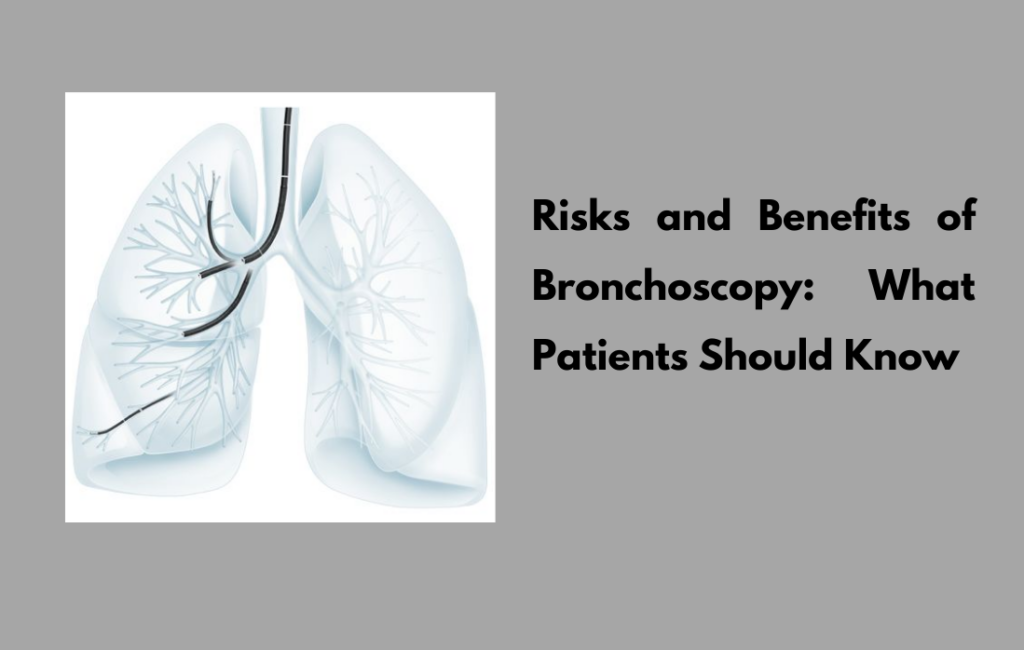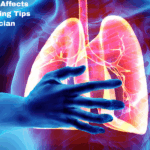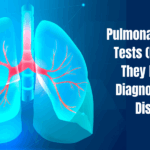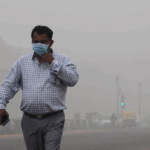
Bronchoscopy is a crucial diagnostic and therapeutic procedure that allows doctors to examine the airways and lungs. The process uses a narrow, flexible tube known as a bronchoscope, which is passed into the airways via the nose or mouth. Bronchoscopy is typically used to identify lung conditions such as infections, blockages, tumors, or chronic coughs. For patients scheduled to undergo this procedure, understanding the process and its associated risks and benefits can significantly ease concerns and ensure better preparation. If you’re seeking expert advice, Dr. Yogesh Agrawal, a leading pulmonologist in Thergaon, Pune, is known for his expertise in bronchoscopy and related procedures. In this blog, we will discuss everything you need to know about bronchoscopy, including preparation, what to expect during and after the procedure, and the potential risks and benefits.
What is Bronchoscopy?
Bronchoscopy is a low-risk procedure that enables doctors to examine the lungs and airways, helping in the diagnosis and treatment of various respiratory issues. The procedure is performed using a bronchoscope, a narrow, flexible tube that contains a light and camera. This instrument is inserted into the respiratory tract to inspect the bronchi and lungs directly. Doctors may also use it to remove mucus, tissue samples, or foreign objects from the airways or to treat conditions like blockages or bleeding.
Bronchoscopy can be performed for a variety of reasons, including:
- To examine ongoing cough, wheezing, or difficulty breathing
- To identify infections, lung cancer, or other conditions
- To conduct a biopsy of lung tissue
- To remove foreign objects or mucus
How to Prepare?
Adequate preparation is crucial for a smooth and successful bronchoscopy. If you are scheduled for a bronchoscopy, your doctor will provide specific instructions, but general preparation steps often include the following:
Fasting: You may need to fast for several hours before the procedure, typically 6-8 hours, to ensure your stomach is empty during the test. This helps prevent any complications during sedation and reduces the risk of aspiration.
Medication: Inform your doctor of any medications you are currently taking, especially blood thinners or medications for pre-existing conditions like asthma or COPD. Your doctor might recommend pausing certain medications for a short period. Health History: Be sure to provide a detailed medical history to your doctor, including any allergies, especially to anesthesia or sedation.
Arrangements for Aftercare: Since you may receive sedatives or anesthesia, arrange for a friend or family member to accompany you home after the procedure.
What to Expect During the Test?
The procedure usually takes between 30 minutes and an hour, depending on the complexity involved. Before the bronchoscopy, you will likely receive local anesthesia to numb your throat and a sedative to help you relax. In some cases, general anesthesia may be used, especially if the procedure is expected to be more complex or if the patient is anxious.
During the bronchoscopy:
Positioning:
You will be asked to lie down, either on your back or side, and a sedative will be administered to help you relax or sleep.
Insertion of the Bronchoscope:
The doctor will insert the bronchoscope through your mouth or nose into the airways. Although it might feel uncomfortable, the procedure is typically not painful due to the sedation and local anesthesia.
Examination and Procedure:
The doctor will examine the airways for abnormalities, such as tumors, inflammation, or infection. If needed, tissue samples or mucus will be taken for testing. If there are blockages, foreign objects may be removed.
What to Expect After a Bronchoscopy?
Following the procedure, you will be observed for a brief time to check for any immediate complications. If sedation was used, you will need some time to fully wake up, and you might feel groggy. It’s common to have a sore throat, a dry cough, or mild discomfort in the chest for a few hours after the procedure. These symptoms typically subside within one or two days.
Other potential side effects include:
- Mild bleeding (blood-tinged mucus) is common right after a bronchoscopy, but if it persists or worsens, it is important to seek medical attention.
- Difficulty swallowing or a hoarse voice may occur due to the tube passing through the throat.
Risks and Benefits of Bronchoscopy
Benefits of Bronchoscopy:
Accurate Diagnosis: Bronchoscopy allows doctors to directly examine the lungs and airways, providing a clearer picture of conditions such as lung cancer, infections, and blockages. This is crucial for accurate diagnosis and determining the best treatment options.
Minimally Invasive: Unlike traditional surgery, bronchoscopy is minimally invasive, which reduces recovery time and the risk of complications.
Therapeutic Uses: Beyond diagnosis, bronchoscopy can be used to treat certain conditions, such as clearing mucus, removing foreign objects, or performing a biopsy.
Risks of Bronchoscopy:
Bleeding: There is a small risk of bleeding, particularly if a biopsy is performed.
Infection: While the procedure is sterile, there is always a slight risk of infection when the bronchoscope is introduced into the body.
Pneumothorax: This is a rare but serious complication where air leaks into the chest cavity, causing the lung to collapse.
Reaction to Sedation or Anesthesia: There are risks associated with sedation, including an allergic reaction or complications from underlying conditions like heart disease or breathing disorders.
Coughing or Sore Throat: Temporary discomfort in the throat and mild coughing can occur.
Summary
Bronchoscopy is a valuable tool for diagnosing and treating respiratory conditions, offering benefits such as accurate diagnosis and minimally invasive procedures. However, like any medical procedure, it comes with potential risks, including bleeding, infection, and reactions to anesthesia. For expert consultation and care regarding bronchoscopy, consider visiting Dr. Yogesh Agrawal, one of the leading pulmonologists in Thergaon, Pune. He and his team provide the highest quality care for patients undergoing this important procedure. With proper preparation and aftercare, bronchoscopy can lead to effective treatment and improved lung health.




